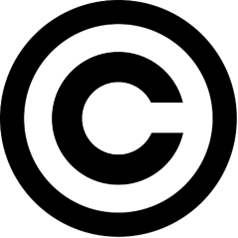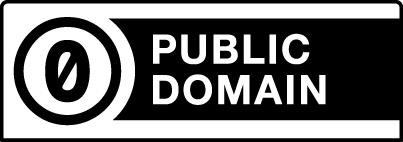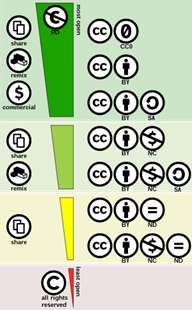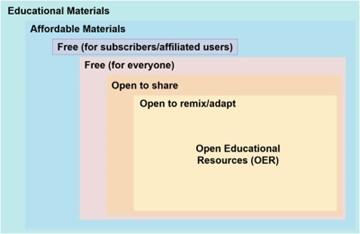Copyright Training
Who owns a Copyright

An owner of a copyright is a:
- Creator
- Custodian
- other owner of these rights
The owner of the copyright holds the title to the:
- Intellectual property of a particular work
- Creation that was the result of the work of the mind of one or more people
- Express ideas through any type of media
Education-based Copyright Violation Lawsuits
DynaStudy v. Houston: A high school principal purchased a few study guides and then made copies to distribute throughout the school district, and many teachers deleted the copyright declaration at the bottom of these pages. A jury awarded the copyright owner $9.2 million for copyright infringement. Eventually the school district settled the case for $7.8 million.
Other cases include Princeton Univ. Press v. Mich. Document Servs., Inc.; Basic Books, Inc. V. Kinko’s Graphics Corp., and Cambridge University Press et al v. Patton et al.
What are the rights in Copyright
Exclusive rights to control:
- Duplications
- Alterations
- Performance
- Display
- Dissemination of a particular work, its expressions, and their manifestations
- Includes derivations (unless it is a genuine parody)
What can be Copyrighted?
Expressions of ideas through any type of media:
- Architectural works
- Musical works
- Literary works
- Dramatic works
- Sound recordings
- Audiovisual works
- Motion pictures
- Compilations and derivative works
- Pictorial, graphic, and sculptural works
What cannot be Copyrighted?
- Processes
- Ideas
- Recipes
- Devices
- Titles of works
- Facts and data
- Public domain materials
- Laws and judicial opinions
- _self books, forms, charts, calendars, etc.
- Works of federal government employees
- Works that have not been created by humans (including ChatGPT, for the time being)
Fair Use and Education
- Encourages reproduction and other uses of copyright works without permission from the copyright owners in order to create non-commercial “transformative” works.
- Education has been the most frequent and noticeable justification for fair use arguments.
- The Fair Use Doctrine is not an allowance. It is a justification for when an institution is brought to court. It is not determined by the plaintiff or the defendant but by the judicial system.
- Some courts either support these arguments or oppose them, and violators are punished with heavy fines.
- Faculty members at multiple college have been found guilty of copying whole chapters and books and giving them out to students in “course packs.”
In order for use of a copyrighted item to fall under an acceptable fair use defense, the user must consider four factors and adjust their use accordingly:
- Factors to consider:
- The purpose and character of the use, including whether such use is of a commercial nature or is for nonprofit educational purposes
- The nature of the copyrighted work.
- The amount and significance of the portion used in relation to the entire work
- The effect of the use upon the potential market for or value of the copyrighted work
- How this affects use:
- Uses in nonprofit educational institutions are more likely to be fair use than works used for commercial purposes, but not all educational uses are fair use
- Reproducing a factual work is more likely to be fair use than a creative, artistic work such as a musical composition. Also, using an unpublished work would probably not be considered justifiable fair use.
- Reproducing smaller portions of a work is more likely to be fair use than larger portions
- Uses which have no or little market impact on the copyrighted work are more likely to be fair than those that interfere with potential markets
TEACH Act and Education
Technology, Education and Copyright Harmonization Act of 2002 - an alternative to fair use that is meant specifically to facilitate use of copyrighted works in online education.
- Avoid use of commercial works that are sold or licensed for purposes of digital distance education.
- Avoid use of pirated works or derivations of works.
- Limit use of works to an amount and duration comparable to what would be displayed or performed in a live physical classroom.
- Interactively use the copyrighted work as part of a class assignment or in your lecture in the distance education course.
- Limit access to the works to students enrolled in the course.
- Prevent the students from retaining the works for longer than a class session.
- Notify the students that the works are subject to copyright protection.
Public Domain

- Works that have either been released into the public domain or
- whose copyright has expired for a number of reasons.
- Most common reason in the United States is that 95 years have passed since the creation of the work.
- Will either have a Public Domain notice
- or a Creative Commons Zero notice on them in a conspicuous location
- Is it in the Public Domain?
What are Open Access Materials?

- Open Access materials have been made completely free to the public with no hidden costs or fees.
- They can be shared and duplicated with no fear of copyright infringement.
- However, they cannot be revised, edited, clarified, or combined with other content.
- Strictly open access licenses include Full Copyright licenses of materials that have been made publicly available, CC-BY-NC-ND license, CC-BY-ND license.
Open Educational Resources

When many people think of OER, they assume that someone copied Wikipedia, formatted it, and packaged it as an academic source. They view it as inferior, unauthoritative, and not worth their effort to review.
While this is true in some instances, many OER materials are legitimate.
OERs are:
- Teaching, learning, and research materials that
- Reside in the public domain or have been released under an open license and are
- Used, repurposed, and disseminated by others
- Reside in the public domain or have been released under an open license and are
How can librarians help you?
We can help by:
- Creating OER's
- Discovering OER's
- Adapting OER's
- Navigating OER Copyright regulations
- Utilizing Open Access materials and all other born-digital materials in the library
Licenses and Attribution
While you may think of licensing as the last step in your creation process, with Open Access materials (including OER) it should be present from Day One.
If you adapt or use other OA material, your license could be determined by the content of those materials. If you use no "Share-Alike" OA materials, you can determine your own license.
If you would like help creating your attribution, ask your institution's copyright agents or use the Attribution Builder created by the University of Washington.
Choosing what license you want to use for your content can be frustratingly difficult until you are deeply familiar with the differences between licenses. You may want to consult the License Chooser created by Creative Commons.
Copyright and GenAI
- Our understanding and actions regarding AI and copyright, therefore, operate within the parameters of existing copyright law.
- Current copyright law mandates human authorship for protection. Can we consider AI an author under existing copyright law?
- We must also explore whether the AI system's programmer can claim copyright over the AI-generated works.
- To navigate this evolving landscape, it is our responsibility to stay informed.
- Always prioritize respecting intellectual property rights when using AI-generated content.
- OpenAI permits the use of its AI outputs as long as we do not misrepresent them as entirely human work.
- Using AI-generated content is not a workaround to avoid due diligence or to disregard others' intellectual property rights.
Cite Your Sources!... and Tools
APA citation:
Hepler, R. and OpenAI, (2023). "[Chat title]", conversation with [tool name] [Large Language/Image Model] ([version information]). Generated on [date]. [shareable link to the chat, if possible].
For example, I would put
Hepler, R., and OpenAI. (2023). "Balrogs might have wings", online conversation with ChatGPT [Large Language Model] (August 3 Version). Generated on August 22, 2023. https://chat.openai.com/share/15d75e9f-16d3-4ebf-81b8-f675528ed267.
The MLA analogue would be:
Hepler, R. and OpenAI. "Balrogs Might Have Wings." Conversation with ChatGPT. August 3 Version, 22 Aug. 2023, https://chat.openai.com/share/15d75e9f-16d3-4ebf-81b8-f675528ed267.
Additional Resources
If you would like a more detailed explanation, please take a look at our Copyright Manual. For additional help, please contact our Copyright Agent for any questions.